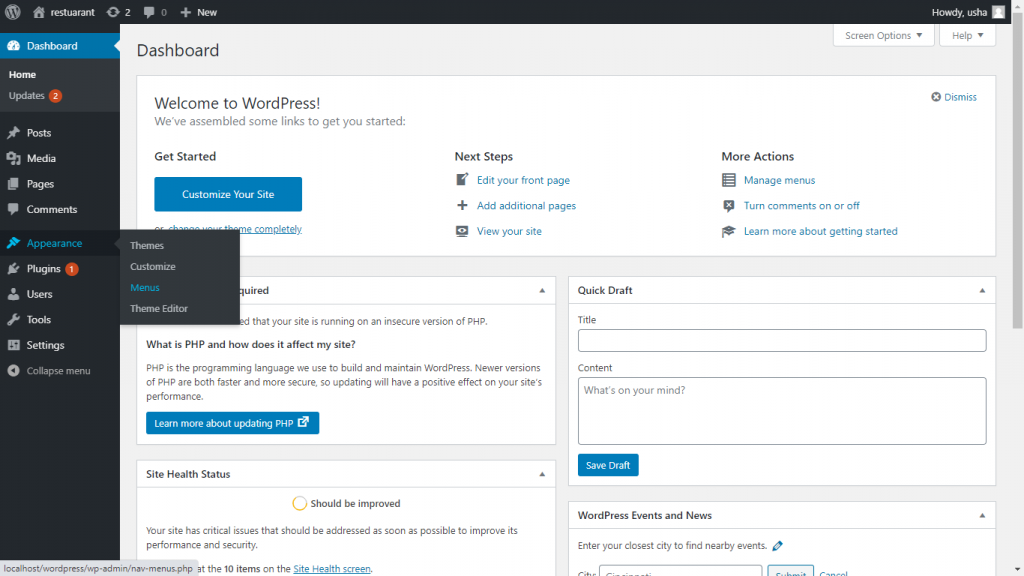

Click on Save Changes and visit the page to make sure it works properly.Click on + Conditions to select the places where you want that specific menu to show up.Click on + Conditional Menu to add a new menu in the same location (e.g., Primary Menu).Go to Appearance → Menus → Manage Locations and start customizing your menus by following these steps: Step 3 – Manage the location for each menu
#Register and display menu wordpress how to#
In case you can’t figure it out, you can read our detailed article on how to create menus in WordPress.
#Register and display menu wordpress install#
In the search bar search for “Conditional Menus” and install the first result ( screenshot).From your WordPress Dashboard go to Plugins → Add New.To set a different menu for a certain page, you’ll need to use the Conditional Menus plugin. To achieve the desired result, you need to create a different menu for each of these scenarios and display them only on those pages. Fortunately, since WordPress has such a massive community behind it, you can achieve this with the help of a free plugin.

Since that page has a different role than the rest of the website, you might want to use the top menu to display your product categories or other relevant information for those seeking to make a purchase. In this case, the navigation links from the top menu are unusable on those separate pages (e.g., contact or shop) since they are set to guide users through different sections on the same page (e.g., your home page).Īnother case might be when users are on your shop page. Ive been registered footer menus from the following function.

There are many instances when you need different menus on different pages.įor example, you might have a one-page website but want a dedicated shop or contact page.


 0 kommentar(er)
0 kommentar(er)
